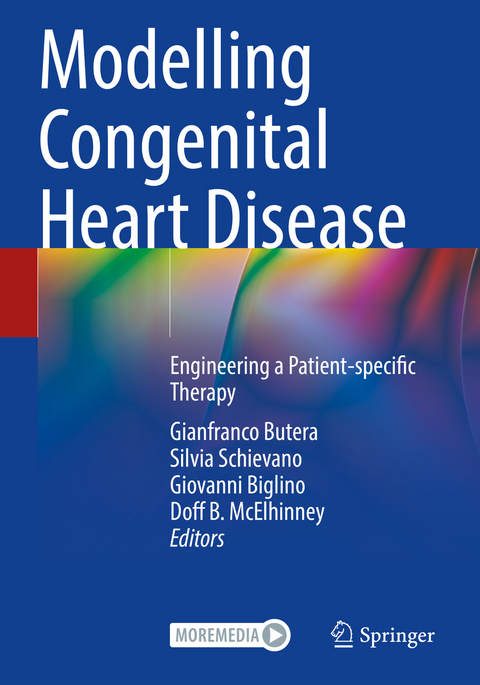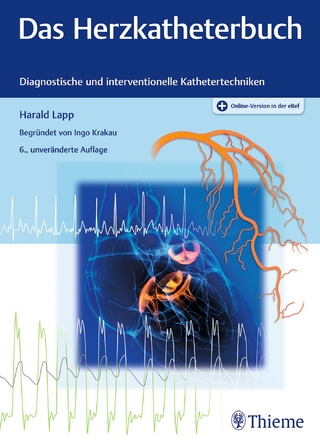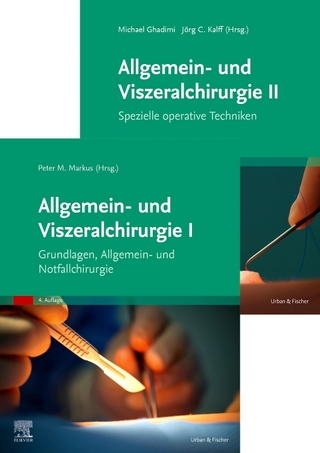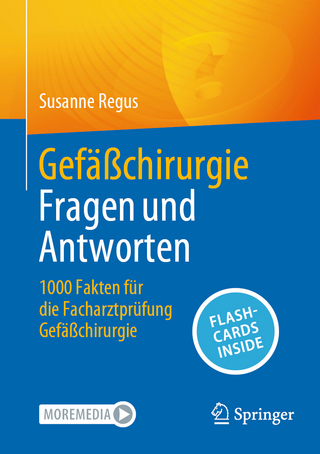
Modelling Congenital Heart Disease
Springer International Publishing (Verlag)
978-3-030-88894-7 (ISBN)
This book combines medicinal and engineering knowledge to present engineering modelling applications (mainly computational, but also experimental) in the context of facilitating a patient-centred approach to treating congenital heart disease (CHD). After introducing the basic concepts of engineering tools, it discusses modelling and the applications of engineering techniques (e.g. computational fluid dynamics, fluid-structure interaction, structural simulations, virtual surgery, advanced image analysis, 3D printing) in specific congenital heart diseases. It also offers a number of clinical case studies describing the applications in real-life clinical practice. The final section focuses on the importance of surgical training, counselling and patient communication.
Considering the unique anatomical arrangement pre/post repair in CHD, as well as the different surgical strategy and device options (e.g. stents) for interventions, a patient-specific approach is certainly warranted in this area of medicine, and engineering is helping improve our understanding of individual patients and their particular anatomy and physiology.
To reinforce the idea of a necessary dialogue between clinicians and engineers, this book has not only been edited by two cardiologists and two bioengineers, but each chapter has been written by a clinician and an engineer, incorporating both voices in the description of state-of-the-art models for different CHDs.
Gianfranco Butera is Chief of the Department of Interventional Congenital Cardiology at Bambin Gesù Hospital IRCCS, Rome, Italy. He is Senior lecturer at King's College University London. He has been Lead Consultant of the Department of Congenital Interventional Cardiology at St Thomas/Evelina Hospital in London. He has served as Chairman of the Interventional Cardiology Working Group of the AEPC and has been Visiting Professor at various universities including Harvard, Bordeaux, Cincinnati and Padova. His clinical and research interests are focused on interventional cardiology in children and adults with congenital heart disease. He has authored more than 230 papers in peer-reviewed journals and has edited books on interventional and fetal cardiology. Silvia Schievano is Professor of Biomedical Engineering at University College London, UK. She graduated from Politecnico of Milan, Italy, and pursued her PhD degree in clinical cardiovascular engineering at Great Ormond Street Hospital for Children, UK. Her main research activities are in translational engineering for clinical practice, focusing on patient specific assessment of complex congenital heart disease cases, statistical shape modelling and population analyses, and computational simulations to support design of new transcatheter valve implantation devices. Giovanni Biglino is a biomedical engineer and currently Senior Lecturer in Biostatistics at the Bristol Heart Institute (Bristol Medical School, UK). After a degree in Bioengineering at Imperial College London and a PhD in cardiovascular mechanics at the Brunel Institute for Bioengineering, he carried out research at Great Ormond Street Hospital and University College London, and completed the Global Clinical Scholars Research Training programme at Harvard Medical School, Boston, USA. His main research interests are cardiovascular modelling, translational research in congenital heart disease and medical statistics. He is a Future Leader in Innovation Enterprise and Research with the UK Academy of Medical Sciences. Doff B. McElhinney, MD, is a pediatric and adult congenital interventional cardiologist who is a Professor of Cardiothoracic Surgery and Pediatrics (Cardiology) at Stanford University. He is Director of the Clinical and Translational Research Program and Medical Director of the Pulmonary Artery Reconstruction Program at the Lucile Packard Children’s Hospital Stanford. After a residency in Pediatrics at The Children's Hospital of Philadelphia, PA, US, he completed pediatric and interventional cardiology fellowships at Children’s Hospital in Boston, MA, US. He served on the faculty at Children’s Hospital in Boston for 6 years, then assumed the role of Director of Interventional Cardiology for Structural and Congenital Heart Disease at New York University, where he served as a Professor of Pediatrics, Medicine, and Cardiothoracic Surgery. He has been at Stanford since 2014.
Preface.- Foreword.- Part 1: Basic concepts.- 1. Overview of computational methods.- 2. Congenital heart diseases: basic concepts from a paediatric cardiology perspective.- Part 2: Diseases: modelling and applications.- 3. Septal defects: clinical concepts, engineering applications and impact of an integrated medico-engineering approach --- Occluder devices.- 4. Aortic coarctation: clinical concepts, engineering applications and impact of an integrated medico-engineering approach.- 5. Tetralogy of Fallot, the right ventricular outflow tract. Clinical concepts, engineering applications and impact of an integrated medico-engineering approach.- 6. Tetralogy of Fallot: clinical concepts, engineering applications and impact of an integrated medico-engineering approach - Ventricle.- 7. Complete Transposition of Great Arteries post Arterial Switch Operation: an integrated approach of imaging and modelling to assess long-term outcomes.- 8. Double Outlet Right Ventricle: introductory concepts and applications.- 9. Hypoplastic Left Heart Syndrome: Introductory Concepts.- 10. Hypoplastic left heart syndrome, Norwood and variants: engineering applications and impact of an integrated medico-engineering approach.- 11. Univentricular hearts: clinical concepts and impact of an integrated medico-engineering approach.- 12. Fontan surgery and fluid dynamics.- 13. Ventriculo-arterial coupling in Fontan patients.- 14. Modelling the pulmonary circulation in CHD: clinical concepts, engineering applications and of an integrated medico-engineering approach.- 15. Modelling pulmonary arterial hypertension: clinical concepts, engineering applications and an integrated medico-engineering approach.- Part 3: How I used a model in clinical practice.- 16. Patient-specific numerical modeling to predict coronary artery compression in transcatheter pulmonary valve implantation.- 17. Transcatheter correction of Sinus Venosus Atrial Septal Defect (SVASD) and partial anomalous pulmonary venous drainage with a covered stent.- 18. Modelling the coronary anatomy in a case of suspected Kawasaki disease with giant coronary aneurysms.- 19. Criss cross heart: is biventricular repair ever possible?.- 20. Use of 3D printing for Congenital Heart Disease.- 21. Case Report: Three-dimensional printed model guiding transcutaneous device closure of a complex residual ventricular septal defect: comparing apples to apples.- 22. 3D "modeling" and "printing" in neonate with complex twisted heart: new frontier for clinical decision and optimal surgical approach.- 23. Biventricular Repair of Complex Transposition of Great Arteries Guided by 3D Reconstruction Imaging.- Part 4: Training, counselling and miscellanea.- 24. Three-Dimensional Printing and its Applications in Education and Teaching.- 25. Dassault Systèmes' Living Heart Project.- 26. Cardiovascular simulation as a decision support tool.- 27. Artificial intelligence in Paediatric Cardiology.- 28. Communication in congenital heart disease: a relevant application for engineering models?.- 29. Three Dimensional Multimodality Fusion in Minimally Invasive Congenital Heart Interventions.
| Erscheinungsdatum | 28.04.2023 |
|---|---|
| Zusatzinfo | XI, 302 p. 137 illus., 130 illus. in color. |
| Verlagsort | Cham |
| Sprache | englisch |
| Maße | 178 x 254 mm |
| Gewicht | 735 g |
| Themenwelt | Medizinische Fachgebiete ► Chirurgie ► Herz- / Thorax- / Gefäßchirurgie |
| Medizinische Fachgebiete ► Innere Medizin ► Kardiologie / Angiologie | |
| Medizin / Pharmazie ► Physiotherapie / Ergotherapie ► Orthopädie | |
| Technik ► Medizintechnik | |
| Schlagworte | 3D Printing • Bicuspid aortic valve • computational fluid dynamics • double outlet right ventricle • Fluid-Structure Interaction • Fontan surgery • Hypoplastic Left Heart Syndrome • Mid-aortic syndrome • Ross procedure • septal defects • structural simulations • Tetralogy of Fallot • virtual surgery |
| ISBN-10 | 3-030-88894-0 / 3030888940 |
| ISBN-13 | 978-3-030-88894-7 / 9783030888947 |
| Zustand | Neuware |
| Haben Sie eine Frage zum Produkt? |
aus dem Bereich


